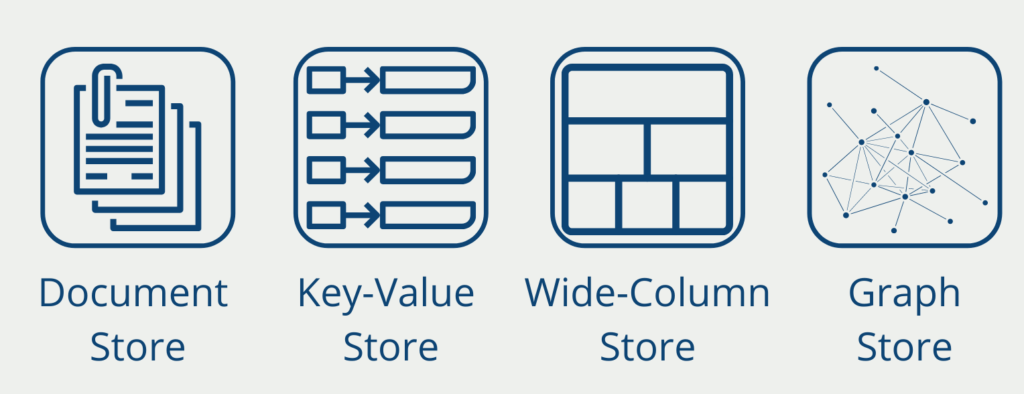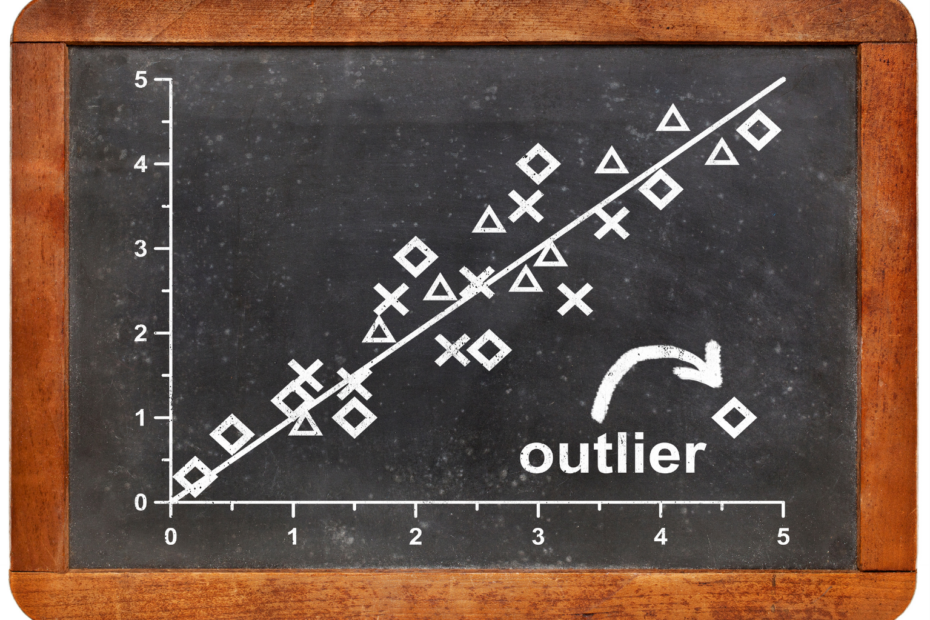MySQL is a Relational Database Management System (RDBMS) developed and operated by Oracle. It is currently one of the most widely used databases in the Big Data ecosystem.
What is a Database?
A database is an organized and structured collection of information that is normally stored in a computer system (source: Oracle). The operation and management of the database is usually done in a database management system (DBMS), such as MySQL. This is one of many programs designed to help store and retrieve the data efficiently.
Many websites, for example, those created with the WordPress program, use a MySQL database to store various information that can then be displayed on the website.
What are the features of MySQL?
The RDBMS MySQL is already used in many companies and organizations. This can be attributed, among other things, to the many advantages of the system.
- High compatibility: MySQL is mainly used for websites and Internet applications. However, it is also compatible with all operating systems, i.e. Unix-based (e.g. MacOS) or Windows. Due to the client-server architecture, which we will describe in more detail in the next section, it can also be combined with a wide variety of programming languages and backends.
- Relational databases: MySQL stores only relational data, i.e. information that can be organized in tables with rows and columns. This structure makes data operations, such as aggregations, much faster and more efficient than with unstructured data.
- Open Source: Any person or company can use, view and modify the source code free of charge. In addition, licenses can be purchased if the database is to be used in a commercial application.
- Easy to use: Relational data is widely used and easy to understand even for users with little experience. This makes it particularly easy to get started, which is further simplified by various tools and applications with a graphical interface for operating the RDBMS.
What is the Client Server Architecture?
When using MySQL, there are two components of the architecture, the client and the server. Clients are all the computers that have the RDBMS installed and access the database. The server, in turn, is the instance that has the actual data stored. There are several reasons why it makes sense to physically separate the server and client as well and not run both on the same computer:
- Centralization: All data is stored centrally on one server and not distributed across different machines. If problems should arise, this one server can be focused on and different systems do not need to be investigated.
- Security aspects: Data access permissions can be implemented very easily, as only access to the data server needs to be restricted. This can be implemented, for example, by assigning users and corresponding passwords.
- Scalability: The scaling of the server is done centrally by better equipping the computer on which the data is located, for example with more memory. These configurations can be carried out easily, since no new machines have to be integrated, which could then lead to network problems, for example.
What is the difference between MySQL and other databases?
MySQL is a widely used open-source relational database management system that is often compared to other databases on the market. Although there are many similarities between this and other databases, there are also some important differences to consider.
One of the main differences is that MySQL is an open-source database, which means that it can be downloaded and used for free. This makes it a popular choice for startups and small businesses that may not have the budget for more expensive databases. In contrast, other databases like Oracle and SQL Server are commercial products that require a license fee to use.
Another difference is the programming language used to interact with the database. MySQL uses SQL (Structured Query Language) to perform database operations, a language used by most relational databases. However, some databases, such as MongoDB, use non-SQL languages like JavaScript.

MySQL also has a number of features and limitations that may differ from those of other databases. For example, MySQL offers strong support for replication and scaling, making it a good choice for large applications that require high availability and performance. However, MySQL may not be the best choice for applications that require complex data types or advanced analytical functions.
Overall, the choice of the database depends on the specific requirements of the application and the resources available to maintain and operate the database. While MySQL may be a good choice for some applications, other databases may be better suited for other applications. It is important to weigh the pros and cons of each database and choose the one that best meets the application’s needs.
What is Replication and Clustering?
Replication and clustering are two common techniques used for the high availability and scalability of MySQL databases.
Replication is a technique in which a copy of a database is stored on one or more servers. This copy, called a slave, is synchronized with the master database, which serves as the source of updates. The master server sends updates to the slave servers, which then apply these changes to their own copies of the database. MySQL replication is useful for scaling reads, backups, and disaster recovery.
Clustering, on the other hand, is a technique of connecting multiple servers into a single logical server. Clustering can be implemented in two ways: Shared-disk clustering and shared-nothing clustering. In shared-disk clustering, multiple servers share the same storage device, while in shared-nothing clustering, each server has its own storage. Clustering is useful for achieving high availability and fault tolerance by distributing the load across multiple servers.
MySQL provides several tools for the replication and clustering of databases, such as Replication, Cluster and Fabric. Replication is a built-in feature that allows a database to be replicated to multiple servers. MySQL Cluster is a highly available database cluster that provides in-memory storage and real-time access to data. MySQL Fabric is a tool that can be used to manage and scale databases across multiple servers.
Replication and clustering in MySQL can provide significant performance, scalability and high availability benefits. However, implementing these techniques can be complex and requires careful planning and execution. It is important to choose the right tool and architecture for your particular use case and to ensure that your database is properly configured and monitored to avoid performance issues and data inconsistencies.
SQL vs. MySQL
MySQL and SQL are not the same. MySQL, as we have already found out, is one of the most widespread RDBMS currently on the market. It uses a so-called client-server architecture, where the server stores the data and the client can query it. In order for this communication to take place smoothly, both systems need a language. This language is SQL. RDBMS are often written in classical programming languages, such as C++. SQL is then in turn used to be able to interact with the database.
The following types of commands can be executed with SQL:
| Category | Description |
| Data Manipulation Language | – Inserting data into an existing table – Updating data – Deleting table rows – Selecting data from tables under certain conditions. |
| Data Definition Language | – Creation, modification, and deletion of tables |
| Data Control Language | – Administrative tasks – Creating new users – Granting access to parts of the database |
MySQL, in turn, offers further features that go beyond these functionalities. For example, MySQL offers a graphical interface, the so-called Workbench, with which the database can be visualized and organized comparatively easily. Of course, SQL, as a pure query language, cannot offer such functionality.
This is what you should take with you
- MySQL is a relational database management system, operated and developed by Oracle.
- Some features of this system make it especially attractive for companies and organizations, which has led to its widespread use nowadays.
- MySQL uses the so-called client-server architecture, in which the data is stored on the server and one or more clients can query it.
- MySQL differs from SQL in that it offers additional features, such as a graphical interface.
What is the Univariate Analysis?
Master Univariate Analysis: Dive Deep into Data with Visualization, and Python - Learn from In-Depth Examples and Hands-On Code.
What is OpenAPI?
Explore OpenAPI: A Comprehensive Guide to Building and Consuming RESTful APIs. Learn How to Design, Document, and Test APIs.
What is Data Governance?
Ensure the quality, availability, and integrity of your organization's data through effective data governance. Learn more here.
What is Data Quality?
Ensuring Data Quality: Importance, Challenges, and Best Practices. Learn how to maintain high-quality data to drive better business decisions.
What is Data Imputation?
Impute missing values with data imputation techniques. Optimize data quality and learn more about the techniques and importance.
What is Outlier Detection?
Discover hidden anomalies in your data with advanced outlier detection techniques. Improve decision-making and uncover valuable insights.
Other Articles on the Topic of MySQL
- Valuable information, documentation, and use cases can be found on the MySQL homepage.

Niklas Lang
I have been working as a machine learning engineer and software developer since 2020 and am passionate about the world of data, algorithms and software development. In addition to my work in the field, I teach at several German universities, including the IU International University of Applied Sciences and the Baden-Württemberg Cooperative State University, in the fields of data science, mathematics and business analytics.
My goal is to present complex topics such as statistics and machine learning in a way that makes them not only understandable, but also exciting and tangible. I combine practical experience from industry with sound theoretical foundations to prepare my students in the best possible way for the challenges of the data world.





